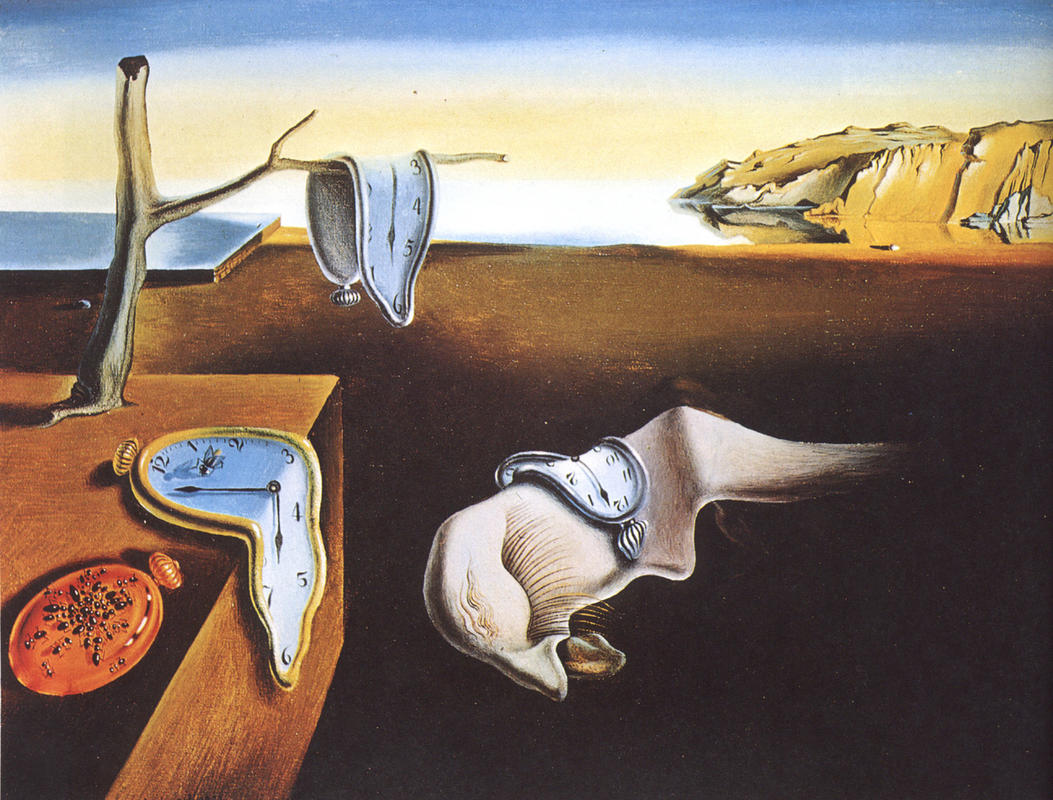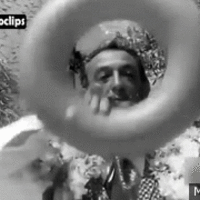More about The Persistence of Memory
- All
- Info
- Shop

Contributor
The landscape of The Persistence of Memory is oddly flaccid in comparison to Salvador Dali’s own rather vertically inclined moustache!
The idea for this painting drooped its way into the artist’s mind while he was looking at a plate of soft Camembert cheese melting in the sun, hence the iconic melting clocks which Dali soon became known for. But infamous timepieces aside…what the hell does this weird-ass painting mean?? It’s the kind of dream-inspired landscape that makes you question how much of it is a dream and how much is reality. Those Surrealists always liked to play tricks with your mind, and this technique of painting called trompe l’oeil is one classic way to confound the viewer. But this still doesn’t explain what it means!
To figure out this painting it’s important to know Dali’s process as well. He worked in a method he created, called the “paranoiac-critical method,” and yes, there’s definitely a bit of crazy in there. In fact, Dali would induce his own crazy by beginning with a single object then responding to it through a sort of irrational, subconscious word association game. Of course, this method was pretty useful for Freudians who were interested in figuring out the mysterious layers of the unconscious. And it worked well for Dali too, an egomaniac obsessed with his own phobias, fetishes and dreams.
This particular bout of self-reflection began with the image of the weirdly shaped head, which is often interpreted as a self-portrait. The soft watches came after. Perhaps anxiety about time itself and how it leaves a path of deterioration in its wake!? And of course, the word “memory” in the title harkens to the past. But mostly this is a very personal image for Dali - a sign of his own messed up brain where castration anxiety, fear of impotence and God knows what other penis-related neuroses lurk. Maybe his gravity-defying mustache was compensating for something after all…
Featured Content
Here is what Wikipedia says about The Persistence of Memory
The Persistence of Memory (Catalan: La persistència de la memòria, Spanish: La persistencia de la memoria) is a 1931 painting by artist Salvador Dalí and one of the most recognizable works of Surrealism. First exhibited at the Julien Levy Gallery in 1932 and sold for $250, The Persistence of Memory was donated to the Museum of Modern Art (MoMA) in New York City two years later in 1934 by an anonymous donor, where it has remained ever since. It is widely recognized and frequently referred to in popular culture, and sometimes referred to by more descriptive titles, such as "The Melting Clocks", "The Soft Watches" or "The Melting Watches".
Check out the full Wikipedia article about The Persistence of Memory




















I have seen pictures of "The Persistence of Memory" before in other classes, and was drawn to leave a comment on it. I believe Dalí has created droopy, melting clocks in other paintings, and I am curious as to why he is drawn to this design. I think this painting is an excellent example of surrealism in the art world; you cannot be sure if you are in a dream or reality. One final note is that I like his use of value and shading in both the background and foreground.